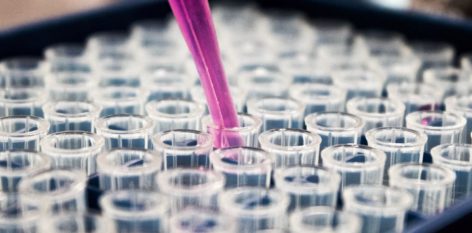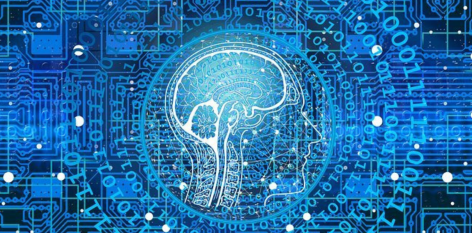2020 has been an unusual year for everyone. The pandemic has made us all casual experts in epidemiology, economic stimulus and baking sourdough bread.
With our newfound expertise we have started to look at ways out of the crisis and the idea of “building back better”. However, it seems the same old measures of what it means to be a thriving society are being used to shape the “better” future in a post-pandemic world.
Gross Domestic Product (GDP) is a cornerstone measure of prosperity for an economy, but it leaves quite a lot out. From non-market transactions, to sustainability, income inequality and human health. If this year has taught us anything, it’s that output is not the only measure of a prosperous country.
Enter Mental Wealth.
Early next year, the Brain and Mind Centre of the University of Sydney will be launching an initiative led by Associate Professor Jo-An Atkinson to measure, monitor and forecast a more wholistic measure of a thriving society to sit alongside GDP, that quantifies our collective mental assets, their impact on economic and social productivity and their associated monetary value.
“It’s an unfortunate reality that compelling arguments for investing in things like education, employment, housing, adequate social protections, cultural safety and of course, mental health and wellbeing need to be made on economic grounds – we need to quantify their impact and demonstrate the significant returns on investment. Ideological entrenchment can make it difficult for moral arguments alone to prevail,” says Atkinson.
Mental Wealth, like GDP, could eventually be used to foster innovation in policy design and unlock potential in a country’s most important asset – its people.
“At the heart of it all, for me personally, is desire to see every person reach their full potential,” Atkinson said.
So, what is Mental Wealth?
Mental Wealth is the social and economic productivity generated by the collective cognitive and emotional resources of citizens that contributes to national prosperity.
“Historically there has been an underestimation of, and underinvestment in our national mental assets. In part this is because traditional academic and policy decisions usually take a deficit-based approach,” said Atkinson.
Focus on measuring how to avoid mental illness is a deficit-based approach. This has led to policy to be focused on managing problems and acute events. But mental health and wellbeing is significantly influenced by the broader social and economic environment, and policies that shape that environment.
“The deficits-based approach does not fully conceptualise the human potential that could be unlocked by fostering mental assets, mental health, and community connectedness, which in turn leads to wealth creation for our economies and society more generally.” says Atkinson.
The Brain and Mind Centre’s Mental Wealth initiative brings together expertise in mathematics, biostatistics, epidemiology, psychology, psychiatry, social science and policy. Alongside the Mental Wealth measure, the team is also leading advances in applying systems modelling and simulation that are capable of anticipating downturns in Mental Wealth, informing clinical care coordination, mental health policy and planning, and how to effectively mitigate threats (like what has been done in the modelling for COVID-19) to forecast where investment will have the greatest impact and return to realise the value of this untapped potential.
“We want to make the switch and show that it’s good economics to invest in things that look after individuals and bring communities together,” says Atkinson.
While there are measures outside GDP such as The Human Development Index (HDI), The Genuine Progress Indicator (GPI) and The Happy Planet Index (HPI) the team led by Associate Professor Atkinson wanted to steer clear of measures of life satisfaction, personal wellbeing or national happiness. Instead, measuring the quantifiable drivers of psychological, cognitive and social functions that underpin contribution to economic productivity, will speak the language of policy makers and economists.
The aim is to enable governments, business and non-profits to make better decisions about how they invest.
“The discipline that modelling and simulation brings to making decisions about how to best invest limited resources to have the greatest impact is essential. We have an obligation to use public funds wisely. There are no excuses. We have the computing power, we have the transdisciplinary scientific methods to deal with complexity, and we have the software that makes systems modelling transparent and interactive to support collective decisions about strategic actions that will deliver real and lasting change. Policy makers no longer need to guess at what’s going to work. It’s just so much more efficient and effective than the current approach” said Atkinson.
Mental Wealth measurement and modelling could help governments make decisions on where to invest not just for economic impact, but social impact, as we come out of the COVID-19 crisis.
The team recently tested interventions using systems modelling outlined in the Road to Recovery report. This found that employment programs, such as JobKeeper, were the single most effective strategy for mitigating the adverse mental health impacts of the COVID-19 crisis.
The modelling forecasted that by extending JobKeeper to May 2022 and investing in increasing health system capacity, Australia could reduce mental health Emergency Department presentations by almost 10 percent (168,655), self-harm hospitalisations by 12 percent (23,112), and save 2,450 (11.2 percent) lives from suicide over the next 5 years, 389 of those among young people.
The collective experience of COVID-19 has brought the need for modelling, forecasting and measurement of economic productivity and Mental Wealth into sharp focus. Stopping government support programs too early during Australia’s economic recovery could have a negative impact.
“A huge amount of people have seen how fragile their foundation is and how their whole world can easily fall apart when that foundation is taken away, in a way that they would not have understood if COVID-19 had not come along,” highlighted Atkinson.
A greater awareness that it only takes one shock, like losing a job or experiencing a mental health episode, for that foundation to crumble, has already seen a shift in ideology from governments in Australia at a Federal, State and Local level to a more modern monetary policy.
With this collective shift and quantifiable measures, we could see significant benefits for individuals who face adverse life circumstances. Enabling better financial support and more coordinated services will help people get back on their feet.
“The circumstances in which people live and struggle can erode their potential. If you can give people genuine support in times of need and give them a sense of agency, it is inspiring to see what individuals can achieve for themselves and collectively for their community,” says Atkinson.
If you or anyone you know needs support, please call Lifeline on 13 11 14, Beyond Blue on 1300 22 46 36 or Headspace on 1800 650 890.
About Brain and Mind Centre – Youth mental health
The University of Sydney Brain and Mind Centre partners across borders and disciplines in pursuit of a common goal: the development of better treatments for conditions of the brain and mind that affect child development, youth mental health and brain ageing.
Our Youth Mental Health and Technology research strives to transform how clinical care is delivered to young people with mental health issues. Rather than rely on broad diagnostic generalisations, we want to see young people reach the right care, first time, and supported in a way that caters to the individual needs of each person. Our research strives for a new way forward, putting young people at the centre of their own care.
For the latest information on the work of the centre and Associate Professor Jo-An Atkinson head to https://www.sydney.edu.au/brain-mind/news-and-events.html




